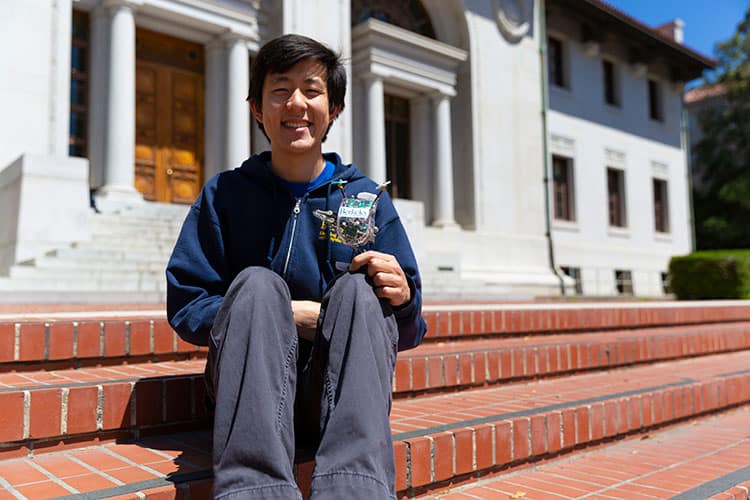
In work being carried out for the US Army, Salto - saltatorial locomotion on terrain obstacles - has been modified for extra capabilities such as bouncing in place, navigating an obstacle course or following a moving target.
According to UC Berkeley, the researchers hope Salto’s new capabilities will propel the development of small, nimble robots that could leap through rubble to aid in search-and-rescue and other military missions.
"The physical environment the army operates in is highly irregular, cluttered, and constantly changing," said Dr Samuel Stanton, program manager at US Army Research Office. "The science underlying the advancements is critical for achieving the desired mobility, speed of action, and situational awareness generation necessary for future army operations."
The research team described the robot's new skills at the 2019 International Conference on Robotics and Automation in Montreal May 21.
"Small robots are really great for a lot of things, like running around in places where larger robots or humans can't fit. For example, in a disaster scenario, where people might be trapped under rubble, robots might be really useful at finding the people in a way that is not dangerous to rescuers and might even be faster than rescuers could have done unaided," said UC Berkeley robotics graduate student Justin Yim. "We wanted Salto to not only be small, but also able to jump really high and really quickly so that it could navigate these difficult places."
Yim works with Ronald Fearing, an electrical engineering and computer sciences professor at UC Berkeley, whose Biomimetic Millisystems Lab explores how the mechanics of animal movement can be applied to agile robotics.
Salto's single leg is modelled on that of the Senegalese bush baby, a primate whose muscles and tendons store energy in a way that lets the creature rapidly perform multiple jumps. By linking a series of quick jumps, Salto also can navigate complex terrain - like a pile of debris - that might be impossible to cross without jumping or flying.
"Unlike a grasshopper or cricket that winds up and gives one jump, we're looking at a mechanism where it can jump, jump, jump, jump," Fearing said in a statement. "This allows our robot to jump from location to location, which then gives it the ability to temporarily land on surfaces that we might not be able to perch on."
https://www.theengineer.co.uk/video-of-the-week-jumping-robot-masters-new-manoeuvres/
Salto is similarly equipped with new technology that lets the robot know the angle it is pointing and the bend of its leg. Without these abilities, Salto has been confined to a room in one of Berkeley's engineering buildings, where motion capture cameras track its exact angle and position and transmit that data back to a computer, which then tells Salto how to angle itself for its next jump.
The robot can now make these calculations for itself, allowing Yim to take the robot outside and use a joystick and radio controller to tell it where to go.
"By understanding the way that these dynamics work for Salto, with its mass and size, then we can extend the same type of understanding to other systems, and we could build other robots that are bigger or smaller or differently shaped or weighted," Yim said.





Swiss geoengineering start-up targets methane removal
No mention whatsoever about the effect of increased methane levels/iron chloride in the ocean on the pH and chemical properties of the ocean - are we...